- Home
- Robert Ludlum
The Cassandra Compact c-2 Page 4
The Cassandra Compact c-2 Read online
Page 4
“Yes, he did.”
“Then go do what you must. I know how to get hold of you if need be. And just in case ― here's the address outside of Washington I use occasionally. It has all the bells and whistles. Never know when you might need the privacy.”
CHAPTER FOUR
The new NASA training facility on the outskirts of Houston consisted of, among other things, four giant hangars, each the size of a football field. Air force police patrolled the outermost perimeter; inside the Cyclone fence, motion sensors and cameras augmented surveillance.
The building designated G-3 housed a full mock-up of the latest generation of the space shuttle. Built along the lines of a commercial flight simulator used to train pilots, it provided the shuttle crew with the hands-on experience that they would carry with them into space.
Megan Olson was in the long tunnel that led from the shuttle's mid-deck to the back of the payload bay. Dressed in baggy blue pants and a loose cotton shirt, she floated in the partial-gravity environment as gently as a falling feather.
A voice crackled in her headset: “You look like you're having way too much fun in there.”
Megan gripped one of the rubber handles embedded in the tunnel wall and twisted around to face the camera that was tracking her progress. Her red hair, pulled back in a ponytail, floated in front of her and she brushed it aside.
“This is my favorite part of the whole experience,” she laughed. “It's like scuba diving ― without the fish.”
Megan floated to a monitor where she saw the face of Dr. Dylan Reed, head of NASA's biomedical research program.
“The lab doors will open in ten seconds,” Reed cautioned her.
“On my way.”
Megan worked her way down at a forty-five-degree angle to the circular hatch door. Just as she touched the handle, she heard the hiss of compressed air releasing the cylinder bolts. She pushed on the door and it swung away smoothly.
“I'm in.”
She settled herself on the specially lined floor and felt the soles of her booties grip the Velcro-type material. Now she was stable. She closed the door, then punched in a code on the alphanumeric pad. The door bolts shot home.
She turned and faced the space lab's work area, divided into a dozen modules. Each was the size of a broom closet; each was designed for a different function or experiment. Carefully, she walked down the center aisle, barely wide enough to accommodate her shoulders, past the Critical Point Facility and the SPE (Space Physiology Experiment), and up to her station, the Biorack.
Like the other stations, the Biorack was encased in titanium housing that resembled a large air-conditioning duct, four feet wide, seven feet high, with the top two feet tilted toward the user at a thirty-degree angle. This design was necessary since the entire lab was encased in a large cylinder.
“Today, we have a Chinese menu,” Reed said cheerfully. “Choose one from column A, and one from column B.”
Megan stationed herself in front of the Biorack and flipped the power switch. The uppermost module, the freezer, was the first to hum to life. Then, working down, the cooler, incubator A, the Glovebox, and incubator B, all came on. She checked the access and control panel, then finally, at knee-level, the power plant. The Biorack, or Bernie, as the unit had been nicknamed, was functioning flawlessly.
Megan checked the LCD readouts of the experiments to be performed. As Reed had joked, it was a Chinese menu of options.
“I think I'll go with the flu, then add a little spice ― Legionnaires' disease.”
Reed chuckled. “Sounds fine. I'll start the clock as soon as you're in the Glovebox.”
The Glovebox was a shoebox-size unit that protruded ten inches from the Biorack. Modeled on the much larger containment units found in most labs, it was totally secure. But unlike its earthbound cousins, this box had been designed to be operated in microgravity. This allowed Megan and her fellow scientists to study organisms in a way not possible in any other setting.
She fitted her hands into thick rubber gloves that extended into the box. The seals between the gloves and the box were two inches of solid rubber, metal, and Keflex ― a thick, virtually unbreakable glass. Even if a spill occurred, it would be contained within the box.
Good thing, too, she thought, given that she was handling Legionnaires' disease.
Although the gloves appeared thick and ungainly, they were actually quite sensitive. Megan touched the control screen located inside the box and gently pressed a three-digit combination. Almost instantly, one of the fifty panels ― no bigger than compartments for compact disks ― slid forward. Instead of a CD nestled in the recess, there was a circular glass tray, three inches in diameter, a quarter inch deep. Even without the microscope, Megan saw the greenish gray liquid inside: Legionnaires' disease.
Both her scientific training and her specialized work in biochemistry had instilled in her a profound respect for the cultures that she handled. Even under the most secure conditions, she never forgot what it was she was holding. Very carefully, she set down the glass tray on the pad. Then she removed the cover, exposing the bacteria.
Reed's voice drifted through her headset: “The clock's running. Remember, in partial gravity you only have thirty minutes for each of the experiments. On the shuttle you'll be able to take your time.”
Megan was grateful for his professionalism. Reed never distracted his scientists by speaking to them in the course of an experiment. Once she had opened the sample, she was on her own.
Megan brought forward the microscope fixed to the top of the shoebox and took a deep breath. She stared at the specimen. She had worked with Legionnaires' disease before; it was like looking at an old friend.
“Okay, fella,” she said out loud. “Let's see if you can get it up when you don't weigh so much.”
She touched the button that activated the video recorder and went to work.
* * *
Two hours later, Megan Olson floated from the Spacelab back to the mid-deck, which housed the sleep stations, food lockers, washrooms, and storage lockers. From there, she climbed the ladder to the flight deck, deserted now, and maneuvered her way to the intercom.
“Okay, guys. Let me out.”
She steadied herself as the air pressure inside the mock-up was equalized. After half a day of partial weightlessness, her body felt extremely heavy. It was a sensation she had never quite gotten used to. She had to reassure herself that she weighed a perfect 118 pounds, almost all of it highly toned muscle.
When the pressure was correct, the cockpit hatch swung open. The air-conditioned breeze that hit her as she stepped out made her clothes stick to her skin. Her first thought after a training session was always the same: Thank God I can have a real shower. Onboard the mock-up, she had practiced taking towel baths.
You'll settle for towel baths i f you get to go at all, she reminded herself.
“You did very well in there.”
Dylan Reed, a tall, distinguished-looking man in his late forties, greeted Megan as she came out.
“Do we have a printout of the results?” she asked.
“The computers are crunching as we speak.”
“This is the third test we've run with Legionnaires'. I'll bet you dinner at Sherlock's that these results will be the same as the other two: Legionnaires' multiplies ferociously, even in the small adjustment to gravity that we've been able to make. Imagine when we can run the experiments in microgravity conditions.”
“Do you really think I would bet against you?” Reed laughed.
Megan followed him across the platform to the elevator that took them to ground level. When she got out, she paused and looked back at the mock-up, majestic under the blaze of a thousand lights.
“I'll bet that's the way she looks in space,” she said softly.
“One day, you'll take a space walk and see for yourself,” Reed assured her.
Megan's voice dropped. “One day…”
As one of the alternate crewmembers, Megan k
new that her chance of going on the next mission, scheduled to leave in seven days, was slim to none. Reed's group of scientists were in top condition. One of them would literally have to break a leg in order for her to move into the slot.
“The space walk can wait,” Megan said as they walked toward the trainees' quarters. “What I need right now is a hot shower.”
“I almost forgot,” Reed said. “There's someone here whom I think you know.”
She frowned. “I wasn't expecting anyone.”
“It's Jon Smith. He arrived a little while ago.”
* * *
Two hours after the Gulfstream had gone wheels-up from Venice's Marco Polo Airport, the pilot came into the cabin with a message for Smith.
“Any reply, sir?” he asked his passenger.
Smith shook his head. “No.”
“The routing change from Andrews to Houston will give us another two hours of flight time. You can get some sleep if you want.”
Smith thanked the pilot, then forced himself to eat some cold cuts and fruit from the galley. The message from Klein had been succinct. Given the bloody events in Venice and the nature of the material Danko had brought out with him, Klein wanted a face-to-face briefing. He also wanted to be close to the president, who was visiting Houston as a show of support for the space program, in case Smith's information had to be brought to the chief executive's attention immediately.
After finishing his snack, Smith prepared his briefing for Klein. He also mapped out what he thought had to be done next and honed his arguments. Before he knew it, the jet was winging over the Gulf of Mexico on its final approach to the NASA airfield.
As he saw the vast facility come into view, Smith suddenly remembered Megan Olson. The thought of her brought a welcome smile to his lips.
The pilot taxied the craft to the security area where Air Force One was parked. Smith descended the steps and was met by an armed air police sergeant who drove him to the visitors' center. In the distance Smith saw the grandstands, packed with NASA employees listening to the president's address. He very much doubted that Klein would be anywhere near the center of attention.
The sergeant showed him into a small office well away from the main exhibits. The place was barren except for a government-issue desk and several chairs. Klein closed the state-of-the-art laptop he had been working on and came to Smith.
“Thank God you're alive, Jon.”
“Thank you, sir. Believe me, I share your sentiment.”
Klein never failed to surprise him. Just when Smith thought that the head of Covert-One had ice water in his veins, Klein would demonstrate genuine concern for the mobile cipher he had sent in harm's way.
“The president will be leaving in less than an hour, Jon,” Klein informed him. “Tell me what happened so that I can determine whether or not to brief him.”
When he noticed Smith glancing around the room, he added, “The Secret Service swept the room for bugs. You may speak freely.”
Smith detailed, minute by minute, what had happened from the moment he had spotted Danko at St. Mark's Square. He noted how Klein flinched when Smith described the shooting. When he mentioned Bioaparat, Klein was clearly shocked.
“Did Danko tell you anything before he died?” Klein demanded. “He didn't get the chance. But he was carrying this.” He handed Klein the page with Danko's handwriting.
Bioaparat cannot go from Stage One to Stage Two. It is not a matter of money, but of inadequate facilities. Still, rumors persist that Stage Two will be completed, though not here. A courier is to leave Bioaparat no later than 4/9 with the cargo.
Klein glanced at Smith. “Who's the courier? Is it a man or a woman? Who does he work for? This is maddeningly inconclusive! And what are Stages One and Two?”
“They generally refer to viruses, sir,” Smith replied, then added, “I'd also like to know what the courier is bringing out. And where he's headed.”
Klein went to the window, which had an excellent view of a fuel depot. “It doesn't make any sense. Why would Danko run if this was all he had?”
“Exactly the question I've been asking myself, sir. Consider this possibility: Danko comes across information about the courier while he's rotating through Bioaparat. He starts investigating ― and ends up digging deeper than he should have. He makes someone suspicious and has to make a run for it. But he doesn't have a chance ― or doesn't dare ― to put down anything else he might have learned. If Danko ever discovered the courier's identity, payload, or destination, that information died with him.”
“I can't believe that he died for nothing,” Klein said softly.
“I won't believe that,” Smith said vehemently. “I think that Danko was anxious to get to us because whatever's headed out of Russia is coming our way.”
“Are you saying that someone is bringing a Russian bioweapon into this country?” Klein demanded.
“Given the circumstances, I'd say it's a strong possibility. What else could have frightened Danko so badly?”
Klein pinched the bridge of his nose. “If that's the case ― or even the suspicion ― I have to alert the president. Steps need to be taken.” He paused. “The problem is, how do we protect ourselves when we don't know what to look for? Danko didn't leave us any clues.”
Something in Klein's words jogged Smith. “That might not be true, sir. May I?” He gestured at the Dell computer sitting on the desk.
Smith logged on to USAMRIID and wended his way through the numerous security checkpoints until he reached the library, the world's biggest, most comprehensive compendium on biowarfare. He entered Stage One and Stage Two and asked the computer to bring up the names of all the viruses that had two distinct development levels.
The machine offered him thirteen choices. Smith then instructed the computer to check those thirteen against viruses that Bioaparat was known to have developed, manufactured, and stockpiled.
“Could be Marburg or Ebola,” Klein said, looking over his shoulder. “Some of the most lethal bugs in the world.”
“Stage Two implies reconfiguration, gene splicing, or some other form of alternation,” Smith told him. “Marburg, Ebola, and others can't be 'developed' per se. They exist in nature ― and, of course, in the bioweapons labs. With them, it's more a case of designing effective battlefield delivery systems.”
Suddenly Smith gasped. “But this… this can be tampered with. We know that the Russians were playing with it for years, trying to alter it to produce a more virulent strain. They were supposed to have shut down those labs, but…”
Klein was listening, but his eyes were locked on the screen where black letters blinked like death's-heads against a white background: SMALLPOX.
* * *
Virus is derived from the Latin word for poison. Viruses are so minuscule that their existence was unknown until the late nineteenth century, when Dmitri Ivanovsky, a Russian microbiologist, stumbled across them while investigating an outbreak of disease in tobacco plants.
Smallpox belongs to the pox family of viruses. Its earliest recorded history dates back to China in 1122 B.C. Since then, it has changed the course of human history, decimating the populations of eighteenth-century Europe and the native peoples of the Americas.
Variola major attacks the respiratory system. After an incubation period of five to ten days, the disease brings on high fever, vomiting, headaches, and stiffness of the joints. After a week, a rash appears, localized at first, then spreading throughout the body and causing blisters. Scabs appear, fall away, and leave scars that serve as incubation beds for a fresh assault. Death can come within two to three weeks or, in the case of the red or the black pox, in a matter of days.
It wasn't until 1796 that a medical assault was mounted on the virus. A British doctor, Edward Jenner, discovered that milkmaids who had contracted a mild form of the pox virus from cows seemed immune to smallpox. Taking samples of a milkmaid's lesions, Jenner inoculated a young boy who subsequently survived the epidemic. Jenner named his dis
covery vaccinia ― vaccine.
The last known case of the disease was reported and treated in Somalia in 1977. By May 1980, the World Health Organization had declared smallpox vanquished. The Organization also ordered the cessation of immunization programs, since there was no tangible need to subject people to even the slightest risk associated with vaccination.
By the end of the 1980s, only two stockpiles of Variola major remained on earth: at the Centers for Disease Control in Atlanta, and at the Ivanovsky Institute of Virology in Moscow. In the case of the latter, the virus was subsequently moved to Bioaparat, located near the town of Vladimir, 350 kilometers southeast of Moscow.
Under an international treaty signed by both the United States and Russia, the samples were to be preserved in highly secure laboratories subject to international inspection. None of the samples could be used for any kind of experiment without the World Health Organization monitors being present.
That, at least, was the theory.
* * *
“In theory, monitors were supposed to be present,” Smith said. He glanced at Klein. “You and I know better.”
Klein snorted. “The Russians gave the WHO bureaucrats some song and dance about updated facilities at Vladimir and the fools let them move the smallpox. What they never realized was that the Russians showed them only the parts of Bioaparat that they wanted them to see.”
This was true. Through defectors and on-site sources, the United States had, over the years, managed to piece together a solid composite of what was really taking place at the Bioaparat complex. The international inspectors had seen only the tip of the iceberg ― the variola storage facilities, which were subsequently approved. But there were other buildings, disguised as seed and fertilizer laboratories, that remained hidden from the world. Klein had enough evidence to bring before the WHO and demand that Bioaparat be completely opened up. But politics was an issue. The current administration did not wish to antagonize Russia, which was threatening to revert to communist rule. Also, a number of the WHO inspectors were not inclined to take American-produced evidence at face value. Nor could their discretion be relied on. American intelligence agencies feared for the lives of those who had furnished him with the information, believing that if the Russians knew what information the West had, they could walk back the cat and discover who had passed it on.

 The Bourne Identity
The Bourne Identity The Gemini Contenders: A Novel
The Gemini Contenders: A Novel The Bourne Legacy
The Bourne Legacy The Jason Directive
The Jason Directive The Bourne Supremacy
The Bourne Supremacy The Moscow Vector
The Moscow Vector The Road to Omaha: A Novel
The Road to Omaha: A Novel The Scorpio Illusion: A Novel
The Scorpio Illusion: A Novel The Ares Decision
The Ares Decision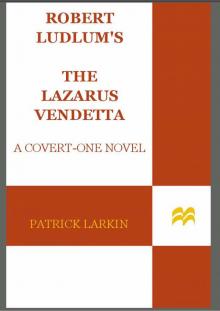 Robert Ludlum's the Lazarus Vendetta
Robert Ludlum's the Lazarus Vendetta The Bourne Ultimatum
The Bourne Ultimatum The Altman Code
The Altman Code The Road to Gandolfo: A Novel
The Road to Gandolfo: A Novel The Bourne Ascendancy
The Bourne Ascendancy The Matarese Countdown
The Matarese Countdown The Hades Factor
The Hades Factor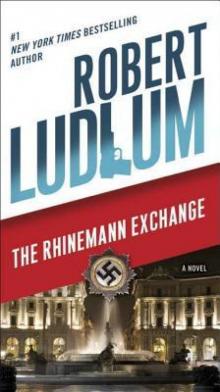 The Rhinemann Exchange: A Novel
The Rhinemann Exchange: A Novel The Sigma Protocol
The Sigma Protocol The Bourne Objective
The Bourne Objective The Bourne Sanction
The Bourne Sanction The Tristan Betrayal
The Tristan Betrayal The Janus Reprisal
The Janus Reprisal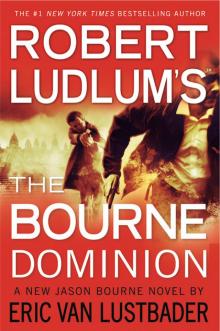 The Bourne Dominion
The Bourne Dominion The Ambler Warning
The Ambler Warning The Matlock Paper
The Matlock Paper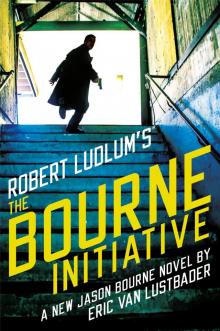 The Bourne Initiative
The Bourne Initiative The Arctic Event
The Arctic Event The Utopia Experiment
The Utopia Experiment The Scarlatti Inheritance
The Scarlatti Inheritance The Paris Option
The Paris Option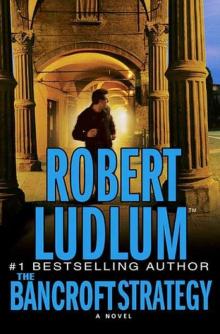 The Bancroft Strategy
The Bancroft Strategy The Bourne Retribution
The Bourne Retribution The Patriot Attack
The Patriot Attack The Cassandra Compact
The Cassandra Compact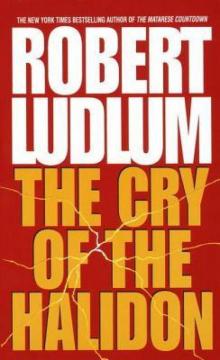 The Cry of the Halidon: A Novel
The Cry of the Halidon: A Novel The Geneva Strategy
The Geneva Strategy The Bourne Deception
The Bourne Deception The Apocalypse Watch
The Apocalypse Watch The Osterman Weekend: A Novel
The Osterman Weekend: A Novel The Matarese Circle
The Matarese Circle The Bourne Imperative
The Bourne Imperative The Bourne Enigma
The Bourne Enigma Scruff
Scruff The Parsifal Mosaic
The Parsifal Mosaic The Bourne Betrayal
The Bourne Betrayal The Aquitaine Progression: A Novel
The Aquitaine Progression: A Novel The Icarus Agenda
The Icarus Agenda Bourne 7 – The Bourne Deception jb-7
Bourne 7 – The Bourne Deception jb-7 The Lazarus Vendetta
The Lazarus Vendetta The Altman Code - Covert One 04
The Altman Code - Covert One 04 Robert Ludlum's The Arctic Event
Robert Ludlum's The Arctic Event The Lazarus Vendetta c-5
The Lazarus Vendetta c-5 The Bourne Identity jb-1
The Bourne Identity jb-1 The Bourne Ultimatum jb-3
The Bourne Ultimatum jb-3 Trevayne
Trevayne The Altman Code c-4
The Altman Code c-4 The Scorpio Illusion
The Scorpio Illusion The Aquitaine Progression
The Aquitaine Progression The Cry of the Halidon
The Cry of the Halidon The Cassandra Compact c-2
The Cassandra Compact c-2 The Bourne Supremacy jb-2
The Bourne Supremacy jb-2 The Rhinemann Exchange
The Rhinemann Exchange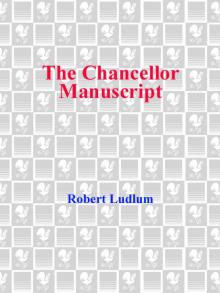 The Chancellor Manuscript
The Chancellor Manuscript The Ares Decision c-8
The Ares Decision c-8 The Road to Gandolfo
The Road to Gandolfo The Prometheus Deception
The Prometheus Deception The Hades Factor c-1
The Hades Factor c-1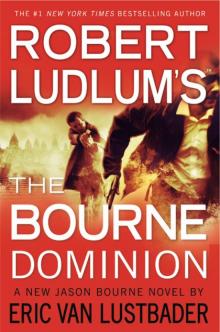 Robert Ludlum’s™ The Bourne Dominion
Robert Ludlum’s™ The Bourne Dominion The Gemini Contenders
The Gemini Contenders Bourne 4 - The Bourne Legacy
Bourne 4 - The Bourne Legacy The Holcroft Covenant
The Holcroft Covenant The Moscow Vector c-6
The Moscow Vector c-6